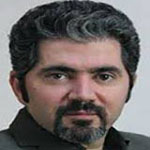Impact of Urban Land Uses in Formation of Spatial Patterns of Crime. Case Study: Region Seventeen of Tehran Municipality
Abstract:
Introduction
Geographical distribution of crimes are affected by location and time of crime commitment, for a criminal and victim. Researches indicate that there are more opportunities for committing a crime in cities, as a result of their particular structure and social, economical, and cultural characteristics in their residents and users. On the contrary, in several of urban parts, these kinds of opportunities are rare, by being barriers and preventive condition. Region 17 is the smallest region in Tehran Municipality. Because of the numerous reasons such as highest population density, very complex urban fabric, obsolete buildings and bad structure, it is confronted with numerous problems such as increasing number of addicted people, increasing number of crime, and environmental sanitation compared with other regions in Tehran city. the goal of this research is to analyze spatial – physical factors affecting drug and rubbery delinquencies in Region Seventeen of Tehran Municipality to answer the following questions:1. What is the spatial distribution and pattern of drug and rubbery delinquencies in RegionSeventeen of Tehran Municipality?2. Do urban land use types have any facilitating impact on the occurrences of crime inRegion Seventeen of Tehran Municipality?3. Where are the most important crime on the basis of spatial – physical elements?Are there any police stations in the centers of delinquencies in Region Seventeen of Tehran Municipality? Methodology
This is an applied rsearch with descriptive-analytic methodology. Dispersion patterns and rate of crime has been described. Factors impacting the rate of crime have been determined using analytical methods (The relationship between crime and enlivenment). Statistical populations in the research are individuals who committed drug and rubbery delinquencies in the Region. To analyze the information, statistics and graphics methods have been used in GIS and SPSS. Results And Discussion
In Region Seventeen of Tehran Municipality population was 256022 in 2006, which contain 3.28 percent of Tehran population. Population density in the region is 311.46 hectare, which is high compared with 104.89 individual per hectare for Tehran city as a whole. In fact, density in the region of Tehran Municipality is three times higher than Tehran city. The spatial distribution of delinquencies and rubbery in the region shows that there is an increasing number of delinquencies in southern, northeast and center of this region. Most of the delinquencies occur in the streets, highways, especial Abozar and Farkhondeh Street around Tehran – Tabriz railroad and crowded squares of Abozar, Azari and Golchin. The dispersion of delinquency in the region show the important and basic point that majority of delinquencies are distributed in the northwest and center in the region of 17, especially neighborhoods of 1712, 1718 and 1701.Conclusion
This research aimed to study the impact of urban land use on spatial pattern of delinquency in Region Seventeen of Tehran Municipality. The results show that residential land use contains 53.91 percent of the total land use of Tehran city; while the highest frequency of delinquency (46.8) come in residential land use. Commercial and administrative land uses cover 20.39 percent of delinquencies in region 17. Green space cover 6.15 percent of total land use. About 11.98 percent of delinquencies in this region occur in green space, while it is the third rank. To study the relationship between land use type and number of delinquencies, Pearson correlation test has been used. The results of Pearson test shows 0.985 percent correlation with the confidence level of 0.99. Therefore, there is significant correlation between land use type and delinquency level. There are higher rate of delinquency in residential and commercial land use. In general, majority of cities in Iran are confronting the problem of crowded space, traffic, population, lack of diversity in land use. Therefore, policies should be directed toward solving these issues. Independence is suggested to improve the condition in the city and provide urban security.Keywords:
Language:
Persian
Published:
Human Geography Research Quarterly, Volume:46 Issue: 87, 2014
Pages:
49 to 68
magiran.com/p1280956
دانلود و مطالعه متن این مقاله با یکی از روشهای زیر امکان پذیر است:
اشتراک شخصی
با عضویت و پرداخت آنلاین حق اشتراک یکساله به مبلغ 1,390,000ريال میتوانید 70 عنوان مطلب دانلود کنید!
اشتراک سازمانی
به کتابخانه دانشگاه یا محل کار خود پیشنهاد کنید تا اشتراک سازمانی این پایگاه را برای دسترسی نامحدود همه کاربران به متن مطالب تهیه نمایند!
توجه!
- حق عضویت دریافتی صرف حمایت از نشریات عضو و نگهداری، تکمیل و توسعه مگیران میشود.
- پرداخت حق اشتراک و دانلود مقالات اجازه بازنشر آن در سایر رسانههای چاپی و دیجیتال را به کاربر نمیدهد.
In order to view content subscription is required
Personal subscription
Subscribe magiran.com for 70 € euros via PayPal and download 70 articles during a year.
Organization subscription
Please contact us to subscribe your university or library for unlimited access!


